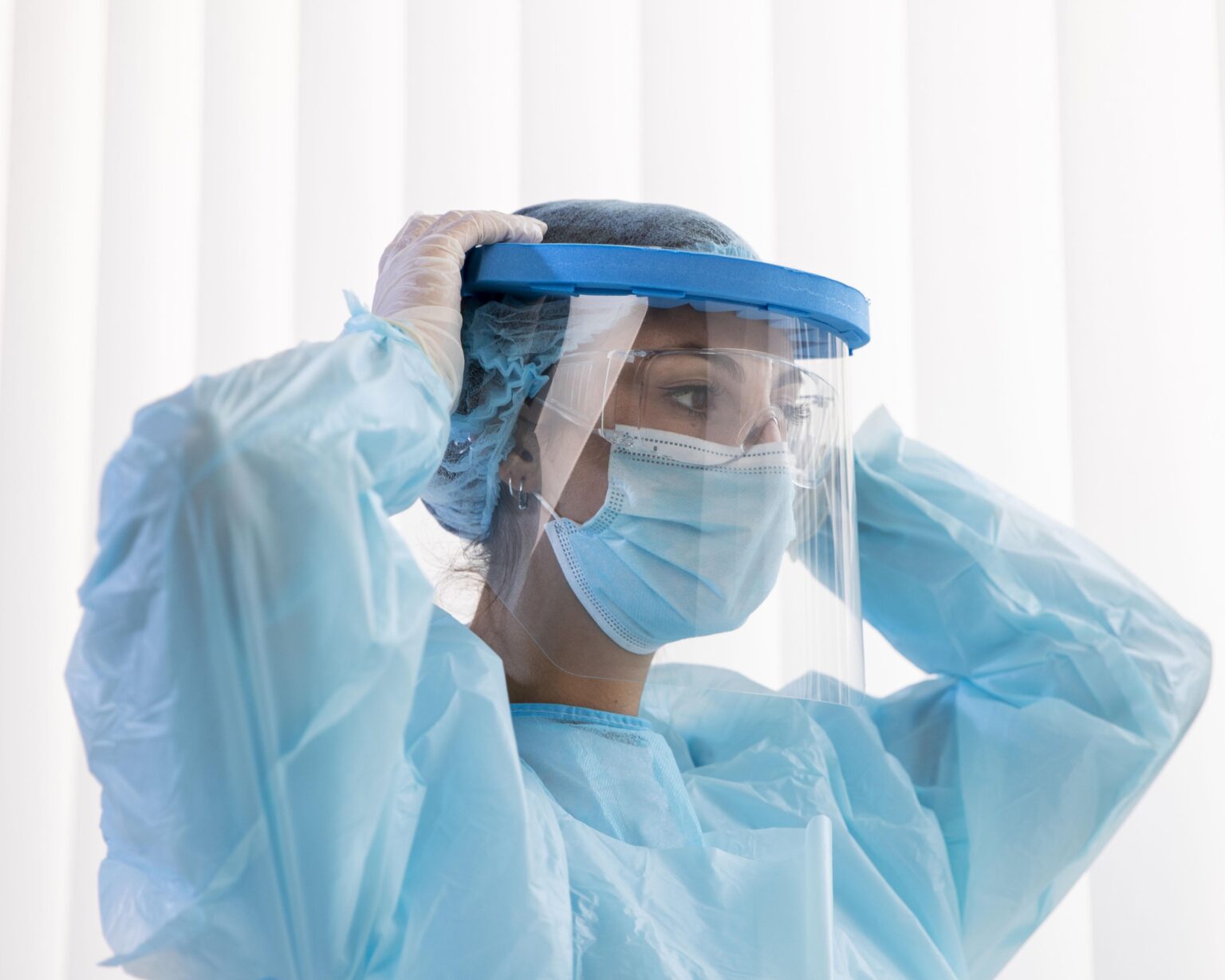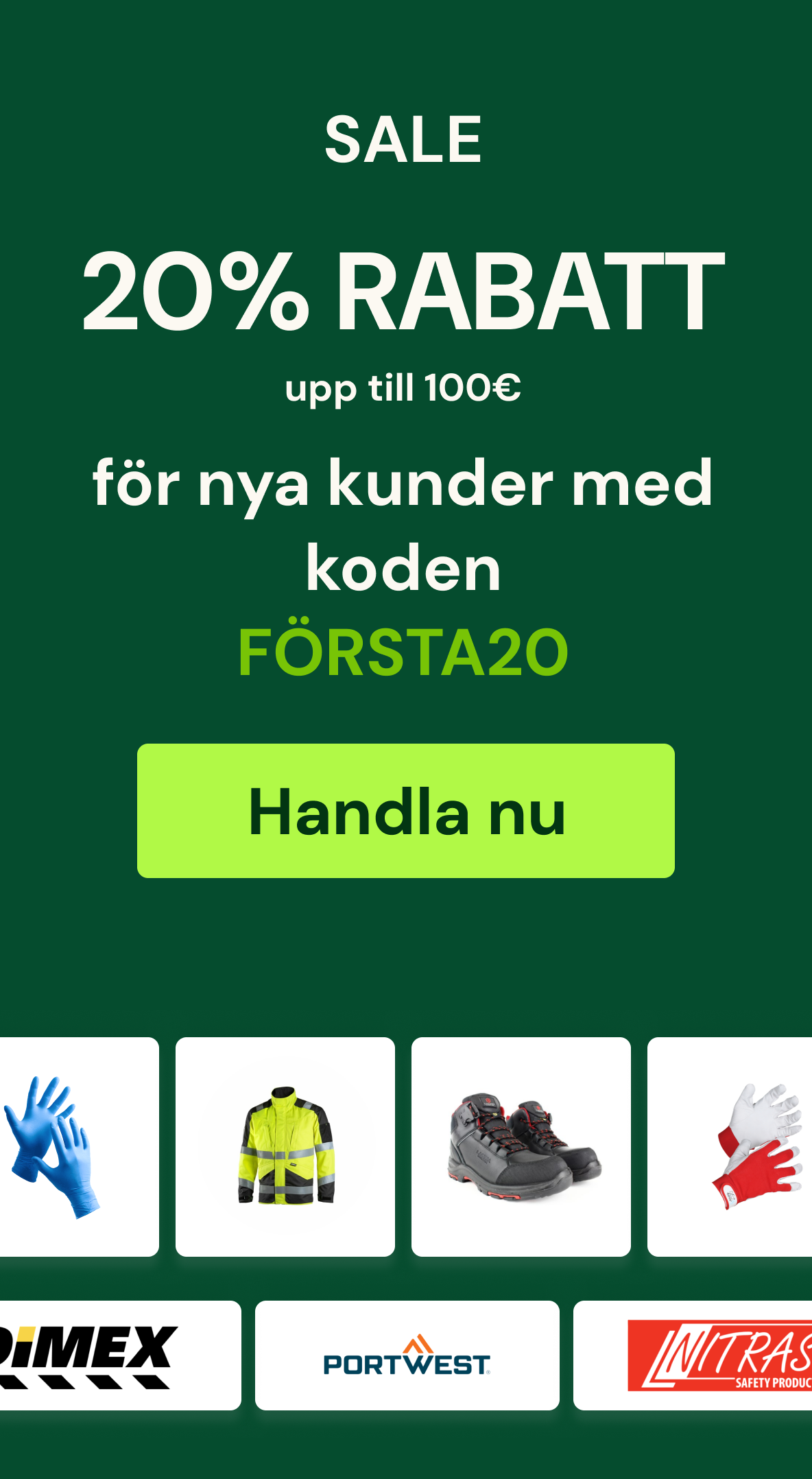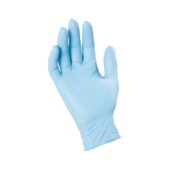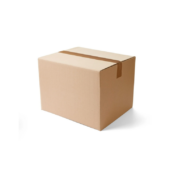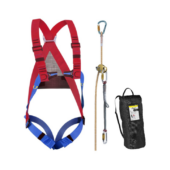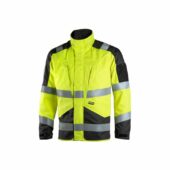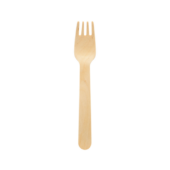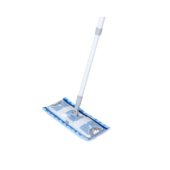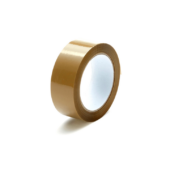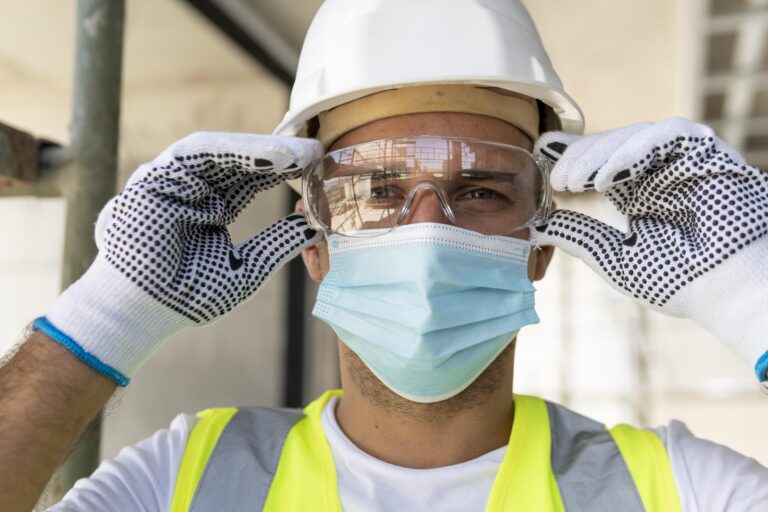I Europa kräver många jobb där människor utsätts för farliga situationer att de bär ansiktsskydd. Målet med den här guiden är att ge dig en fullständig förståelse för ansiktsmasker genom att förklara hur de fungerar, vilka fördelar de har och vilka regler som gäller i Europa.
Ansiktsskydd är mycket viktiga för att skydda ansiktet på platser där det kan träffas av flygande föremål, kemikaliestänk och andra eventuellt farliga material. Här tar vi upp de viktigaste sakerna att tänka på när man väljer och använder ansiktsskydd på jobbet.
1. Förstå ansiktsskydd och deras syfte
Ansiktsskydd är genomskinliga, hållbara skärmar som placeras över ansiktet för att skydda det mot faror i arbetet. De är vanligtvis tillverkade av plast eller akryl, är lätta och kan fästas på en hjälm eller ett huvudstycke.
De används inom många områden, t.ex. inom sjukvården, industrin och byggbranschen, för att förhindra att människor skadas av stänk, skräp och annat som kan finnas i luften.
Primära syften med ansiktsskydd:
- Skydd mot stänk av kemikalier: Ansiktsmasker skyddar ögon och ansikte från farliga kemikaliestänk i industri- och laboratoriemiljöer.
- Undvikande av flygande skräp: Personer som arbetar med byggnadsarbete, metallbearbetning och träbearbetning är skyddade mot damm och flygande föremål.
- Förstärker immunförsvaret: I vårdmiljöer skyddar ansiktsskydd mot droppar som andas in.
2. Typer och material för ansiktsskydd
Det finns flera olika typer av ansiktsskydd som är utformade för att uppfylla specifika säkerhetsbehov. Valet av ansiktsskydd beror på arbetsmiljön och de faror som finns. Här är de viktigaste kategorierna:
- Ansiktsskydd för engångsbruk: Dessa är populära inom sjukvården och är avsedda att användas endast en gång. De är vanligtvis tillverkade av billig, lätt plast.
- Återanvändbara ansiktsskydd är tillverkade av starka material och kan rengöras och användas mer än en gång. Det gör dem till ett kostnadseffektivt val för företag som regelbundet behöver skydda sina anställda.
- Specialsköldar för hög påverkan: Vissa skydd är gjorda för jobb där det finns snabbt rörliga delar eller mycket värme, som skärning av metall eller svetsning.
Använda material:
- Polykarbonat är klart och går inte lätt sönder vid en träff, så det är perfekt för sköldar som måste hålla länge.
- När det gäller sköldar kan de av acetat hantera droger och fungerar bra i labb.
- PET används för att tillverka ansiktsmasker för engångsbruk eftersom det är lätt och enkelt att tillverka.
Eftersom varje material har sina egna egenskaper som gör det bra i vissa miljöer beror valet av rätt material på de faror som arbetarna utsätts för.
3. Standarder och förordningar i Europa
Det finns regler för ansiktsskydd i Europa som säkerställer att de fungerar väl och håller arbetstagarna säkra. Att följa dessa regler är nödvändigt för att försäkra användarna om att skärmen uppfyller säkerhetsbehoven.
- CE-märkning: Ansiktsskydd som säljs inom EU måste vara CE-märkta, vilket innebär att de uppfyller EU:s standarder för hälsa, säkerhet och miljö.
- EN 166 Standard: Denna europeiska standard specificerar kraven för personligt ögonskydd, inklusive optisk kvalitet, slagtålighet och hållbarhet under olika förhållanden.
- EN 170 och EN 172: För skydd som ger UV-skydd eller tonade skydd definieras skyddsnivån och lämpliga användningsområden i standarderna EN 170 och EN 172.
Arbetsgivaren ansvarar för att den utrustning som tillhandahålls uppfyller dessa standarder för att skydda personalen på ett effektivt sätt.
4. Viktiga egenskaper hos effektiva ansiktsskydd
När det fungerar ger ett bra ansiktsskydd dig säkerhet utan att du behöver känna dig illa till mods. Tänk på de här sakerna:
- Klar sikt: Bra datorer hindrar inte sikten, så att medarbetarna kan utföra sina arbetsuppgifter på rätt sätt.
- Komfort och passform: Maskerna är bekvämare att bära under långa perioder när huvudbanden kan bytas ut och ansiktsskydden är vadderade.
- Ansiktsskydd ska passa bra ihop med annan skyddsutrustning som hjälmar, skyddsglasögon och andningsmasker.
Var och en av dessa funktioner gör ansiktsskydden mer användbara och effektiva i olika arbetssituationer.
5. Underhåll och skötsel av ansiktsskydd
Regelbundet underhåll och korrekt skötsel förlänger livslängden på återanvändbara ansiktsskydd och säkerställer att de fortsätter att ge ett effektivt skydd. Här följer några riktlinjer för underhåll:
- Rengöring: Rengör ansiktsskydden regelbundet med vatten och tvål. Använd inte grova rengöringsmedel som kan repa ytan.
- Sköldarna ska förvaras torrt, svalt, skyddat från direkt solljus och på avstånd från kemikalier som kan skada materialet.
- Inspektion: Kontrollera med jämna mellanrum om skyddet har sprickor, repor eller andra skador som kan göra det mindre skyddande.
Väl underhållna ansiktsskydd är mer effektiva och hjälper till att förhindra synlighetsproblem eller försvagad strukturell integritet över tid.
6. Vanliga användningsområden för ansiktsskydd i Europa
Det är vanligt att företag i Europa som behöver ansiktsvakter följer strikta hälso- och säkerhetsregler. Detta görs för att hålla arbetstagarna säkra. Här är några viktiga sätt att använda det:
- Inom sjukvården får kroppsvätskor och andningsdroppar inte komma på vårdpersonalen.
- Det är viktigt att skydda arbetstagarna från damm, gnistor och rörliga föremål inom bygg- och tillverkningsindustrin.
- I laboratorier och kemiska fabriker kan det vara bra att skydda personalen från farliga stänk och ångor.
Ansiktsskydd används på dessa platser som en del av en fullständig säkerhetsplan för jobbet. De bärs ofta tillsammans med annan skyddsutrustning.
Kolla in olika ansiktsskydd för olika branscher från vår katalog.
7. Välja rätt ansiktsskydd för din bransch
För att välja rätt ansiktsskydd måste man bedöma de specifika risker som finns på arbetsplatsen. Här följer en allmän guide som hjälper dig att välja rätt typ:
- För kemiska miljöer: Välj skydd av acetat eller polykarbonat som uppfyller standarden EN 166 och som är kemikaliebeständiga.
- För skydd mot stötar: Polykarbonatsköldar som är klassade för stötskydd är lämpliga för branscher som metallbearbetning och konstruktion.
- För vårdinrättningar: Lätta engångssköldar är ofta att föredra eftersom de minimerar risken för kontaminering.
Varje arbetsmiljö har unika skyddskrav, så det är viktigt att välja ett ansiktsskydd som är utformat för specifika förhållanden för att uppnå optimal säkerhet.
8. Europeiska initiativ för säkerhet på arbetsplatsen och skyddsutrustning
Myndighetsorgan och företagsgrupper över hela Europa arbetar för att göra arbetsplatserna säkrare och se till att alla har tillgång till bra skyddsutrustning. En av dessa grupper är Europeiska arbetsmiljöbyrån (EU-OSHA), som erbjuder verktyg, studier och regler för att hålla arbetsplatserna säkra.
EU-OSHA samarbetar med nationella säkerhetsorgan för att se till att ansiktsskydd och annan skyddsutrustning uppfyller kraven och är tillgängliga för de företag som behöver dem. Denna enhetliga metod gör jobben säkrare över hela kontinenten.
9. Ansiktsskyddets begränsningar och behov av ytterligare skydd
Ansiktsskydd kan skydda dig från vissa faror, men de kan inte skydda dig från allt. Ansiktsskydd är främst avsedda att skydda framsidan av ansiktet, de täcker inte sidorna av ansiktet. Därför ska de bäras tillsammans med annan personlig skyddsutrustning som behövs för att bedöma farorna på arbetsplatsen.
Vissa problem:
- Begränsat skydd från sidan: Ansiktsskydd skyddar inte alltid tillräckligt bra mot faror som kommer från sidan.
- Variationer i skyddsnivå: Det är inte alla skydd som är resistenta mot UV-ljus eller kemikalier, så det är viktigt att välja ett skydd som är klassat för dessa faror.
De flesta arbetstagare är bäst skyddade när de använder ansiktsskydd som en del av en komplett PPE-plan, särskilt i högriskmiljöer.
10. Vanliga frågor och svar (FAQ)
Hur ofta ska du byta ut ansiktsskydden?
Ansiktsskydd måste bytas när de blir repade, trasiga eller spruckna. Ansiktsskydd som kan användas mer än en gång bör regelbundet kontrolleras för slitage, medan engångsskydd ska kastas efter en användning.
Hur stora är alla ansiktsskydden?
De flesta ansiktsmasker kan justeras, men det är viktigt att välja en som passar användarens huvudform och storlek väl.
Ansiktsskydd: Kan de bäras med glasögon?
Ja, många ansiktsskydd är gjorda för att enkelt passa över receptbelagda glasögon. På så sätt kan du se tydligt och få full säkerhet.
Ansiktsskydd: Fungerar de mot COVID-19?
Maskerna bärs ofta med ansiktsskydd för att göra processen att stoppa spridningen av virus ännu effektivare. Observera att ansiktsskydd blockerar andningsdropparna.
Hur vet jag om mitt ansiktsskydd följer EU:s regler?
Ansiktsskydden ska vara märkta med EN 166 eller liknande, vilket du hittar på CE-märkningen.
Slutsats
Ansiktsskydd är en viktig del av den personliga skyddsutrustningen inom industrin och sjukvården i Europa.
Genom att förstå de olika typerna, materialen och regleringsstandarderna kan arbetsgivare och arbetstagare göra välgrundade val som förbättrar säkerheten på arbetsplatsen.
I takt med att reglerna utvecklas kan man genom att hålla sig uppdaterad om de senaste säkerhetskraven se till att ansiktsskydden fortsätter att erbjuda ett effektivt och tillförlitligt skydd i Europas olika branscher.
Genom att prioritera kvalitet, underhåll och korrekt användning blir ansiktsskydden ett värdefullt verktyg för att skydda hälsa och säkerhet på arbetsplatsen.

